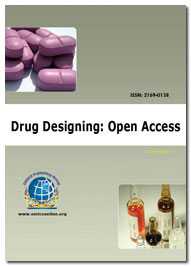After a successful conference of Pharmaceutica-2015, OMICS International is currently bringing forth "8th International Conference and Exhibition on Pharmaceutics & Novel Drug Delivery Systems” (Pharmaceutica-2016) slated on March 07-09, 2016 at Madrid, Spain.
Pharmaceutica-2015 conveys recent developments in Nano-drug delivery systems, novel pre-formulation, formulation approaches and strategies have reoriented the focus of almost all the Pharmaceutical and Biopharmaceutical R&D’s towards Novel Drug Delivery Systems (NDDS). To minimize drug degradation and loss, to prevent harmful side-effects and to increase drug bioavailability and the fraction of the drug accumulated in the required zone, various drug delivery and drug targeting systems are currently under development. A complete knowledge of the relevant therapeutic and physicochemical properties of the drug enables determination of its proper formulation and delivery method.
Pharmaceutica-2016 mainly focusing on theme of “Challenges and Advances in Drug Delivery Approaches”
Novel drug delivery systems were not only beneficial for patients, which also less complicated, non-invasive and a reduction in the dose of active ingredients.
-
The global market for drug delivery systems in 2010 was $131.6 billion and is expected to increase to $137.8 billion by the end of 2011. The market is expected to rise at a compound annual growth rate (CAGR) of 5% and reach nearly $175.6 billion by 2016
-
The U.S. constituted approximately 59% of the total drug delivery market in 2010 and was $78 billion. It is forecast to grow from $82 billion in 2011 to $103 billion in 2016 at a CAGR of 4.7%
-
Europe contributed about 27% of the total drug delivery market in 2010 and was $36 billion. BCC expects this market to grow to $49 billion by 2016 at a CAGR of 5.6%
OMICS International is a pioneer and leading scientific event organizer, publishing around 500 Open access journals and conducting over 300 Scientific Meetings all over the globe annually with the support of more than 1000 scientific associations, 30,000 editorial board members, and 3.5 million followers to its credit.
Read more












